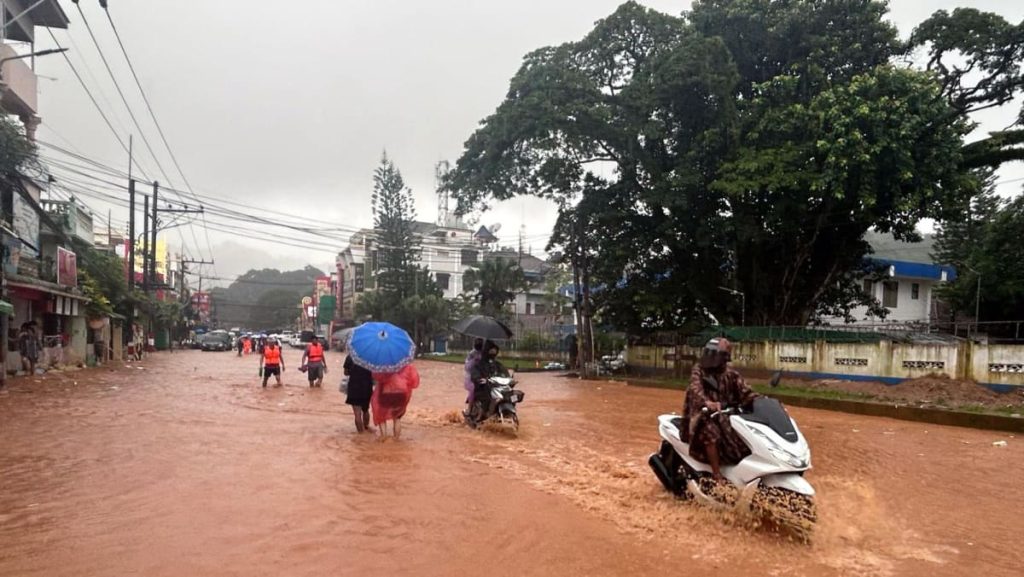The town of Tachileik in Myanmar has been experiencing days of heavy rain which have caused flooding, knocked out power and telephone lines, and trapped many residents. Images from the town show people struggling to navigate the streets on motorcycles through the flooded waters, while others try to salvage their shops and homes. Residents report that many people are stuck, unable to leave their offices, and that some houses are already submerged underwater, affecting at least 60,000 people in the town.
Social media images captured residents sitting on their rooftops as the floodwaters continued to rise below them. Across the border in the Thai district of Mae Sai, similar scenes were reported with floodwaters running through the streets. The weather office in Thailand has predicted more heavy to very heavy rains in the northern region for the following day, exacerbating the already dire situation in both Tachileik and Mae Sai. Last week, a tragedy occurred when a boat carrying at least 20 people on the Mekong river, located around 20km from Tachileik, met with a mishap resulting in the passengers going missing.
Myanmar’s rainy season usually brings months of heavy downpours to the region, but scientists believe that man-made climate change is intensifying weather patterns in Southeast Asia. The severity of the floods in Tachileik and Mae Sai, coupled with the impact on residents and infrastructure, underscores the urgent need for climate action to prevent such disasters from occurring in the future. As extreme weather events become more common, it is crucial for governments and communities to prioritize disaster preparedness and climate adaptation measures to protect vulnerable populations and mitigate the effects of climate change on the environment.
The images and reports coming out of Tachileik and Mae Sai serve as a stark reminder of the devastating consequences of climate change on communities around the world. The immediate impact of flooding, power outages, and trapped residents highlights the urgent need for coordinated disaster response efforts and support for those affected by the floods. With weather patterns becoming more unpredictable and intense due to climate change, it is crucial for governments to invest in infrastructure and resources to better prepare for and respond to natural disasters such as flooding.
As the residents of Tachileik and Mae Sai struggle to cope with the aftermath of the floods, there is a growing recognition of the need for long-term climate solutions to prevent such disasters from occurring in the future. By taking proactive measures to reduce greenhouse gas emissions, adapt to changing weather patterns, and protect vulnerable communities, countries can work towards building resilience to the impacts of climate change and safeguarding the well-being of their citizens. The recent flooding in Tachileik and Mae Sai serves as a wake-up call for policymakers, businesses, and individuals to urgently address the root causes of climate change and take meaningful action to create a more sustainable and resilient future for all.













